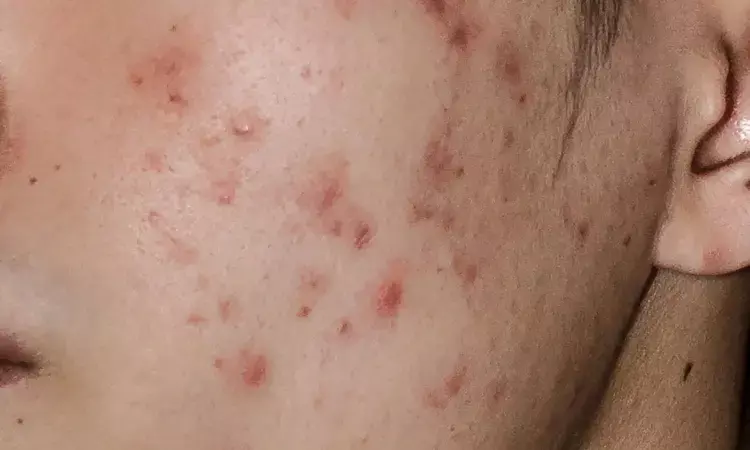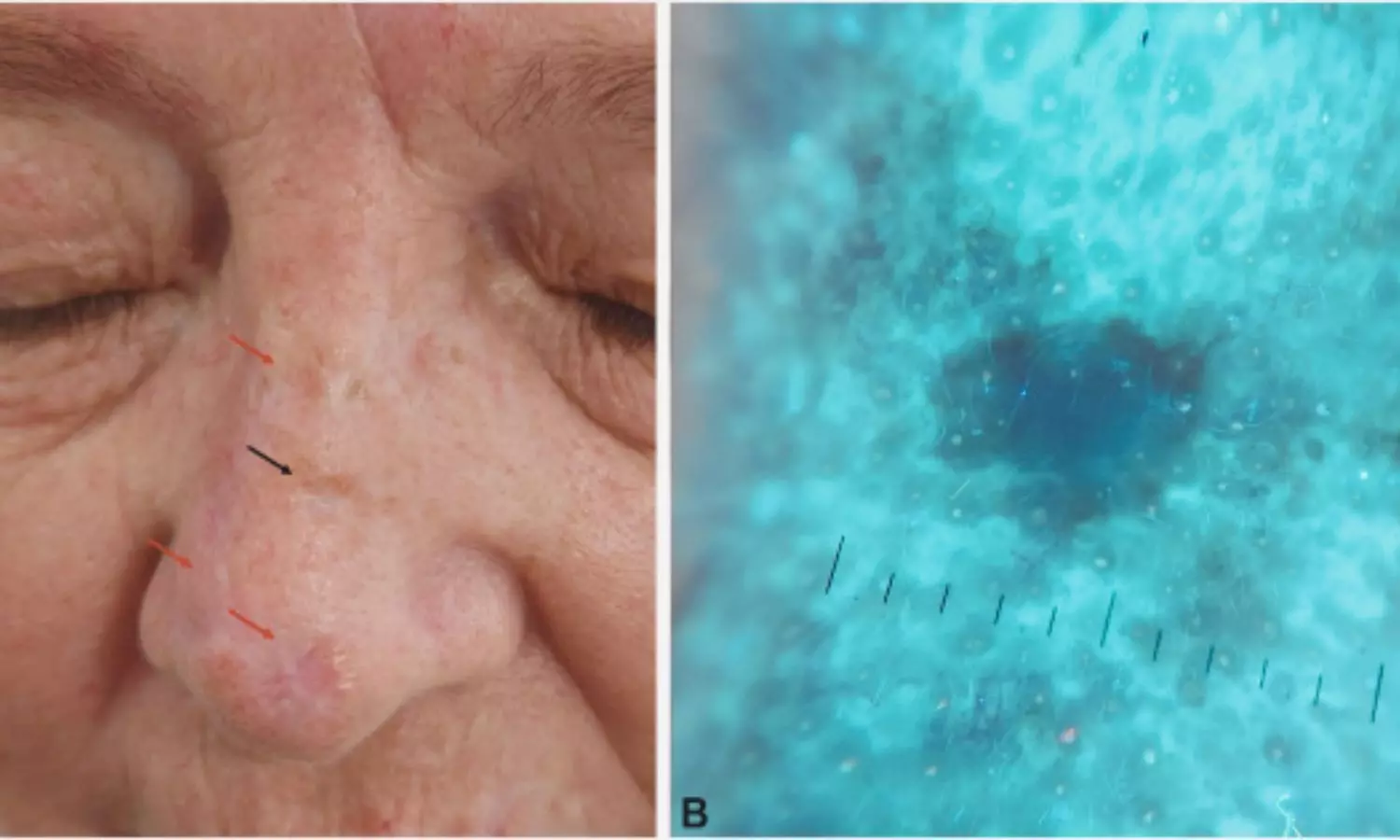- Home
- Medical news & Guidelines
- Anesthesiology
- Cardiology and CTVS
- Critical Care
- Dentistry
- Dermatology
- Diabetes and Endocrinology
- ENT
- Gastroenterology
- Medicine
- Nephrology
- Neurology
- Obstretics-Gynaecology
- Oncology
- Ophthalmology
- Orthopaedics
- Pediatrics-Neonatology
- Psychiatry
- Pulmonology
- Radiology
- Surgery
- Urology
- Laboratory Medicine
- Diet
- Nursing
- Paramedical
- Physiotherapy
- Health news
- Fact Check
- Bone Health Fact Check
- Brain Health Fact Check
- Cancer Related Fact Check
- Child Care Fact Check
- Dental and oral health fact check
- Diabetes and metabolic health fact check
- Diet and Nutrition Fact Check
- Eye and ENT Care Fact Check
- Fitness fact check
- Gut health fact check
- Heart health fact check
- Kidney health fact check
- Medical education fact check
- Men's health fact check
- Respiratory fact check
- Skin and hair care fact check
- Vaccine and Immunization fact check
- Women's health fact check
- AYUSH
- State News
- Andaman and Nicobar Islands
- Andhra Pradesh
- Arunachal Pradesh
- Assam
- Bihar
- Chandigarh
- Chattisgarh
- Dadra and Nagar Haveli
- Daman and Diu
- Delhi
- Goa
- Gujarat
- Haryana
- Himachal Pradesh
- Jammu & Kashmir
- Jharkhand
- Karnataka
- Kerala
- Ladakh
- Lakshadweep
- Madhya Pradesh
- Maharashtra
- Manipur
- Meghalaya
- Mizoram
- Nagaland
- Odisha
- Puducherry
- Punjab
- Rajasthan
- Sikkim
- Tamil Nadu
- Telangana
- Tripura
- Uttar Pradesh
- Uttrakhand
- West Bengal
- Medical Education
- Industry
Innovative Triple-Combination Gel tied to Swift and Lasting Acne Relief, Study Finds

In a significant advancement in acne treatment, a novel once-daily triple-combination gel has demonstrated remarkable efficacy, outshining conventional monotherapies and dual-combination products. This new approach, combining an antibiotic, antibacterial agent, and retinoid, is designed to deliver expedited and sustained improvement in acne lesions. the first FDA-approved triple-combination topical acne product, clindamycin phosphate 1.2%/adapalene 0.15%/benzoyl peroxide 3.1% (CAB) gel demonstrated significantly greater lesion count reductions compared to its dyads and vehicle as early as week 4, with sustained efficacy after 12 weeks of treatment.
The trial results were published in the Journal of Drugs in Dermatology.
Implementing a daily regimen that combines an antibiotic, antibacterial agent, and retinoid may yield accelerated improvements in acne compared to single or dual-component products. Hence, researchers conducted a post-hoc analysis to compare the reductions in acne lesions between clindamycin phosphate 1.2%/adapalene 0.15%/benzoyl peroxide 3.1% (CAB) gel and its paired formulations and a control vehicle. The subject of this post hoc analysis is the clindamycin phosphate 1.2%/adapalene 0.15%/benzoyl peroxide 3.1% (CAB) gel, the first FDA-approved triple-combination topical acne product. The study aimed to assess its impact on acne lesion reduction compared to its dyads and a control vehicle.
Conducted in two phases, encompassing 741 participants in phase 2 and 363 participants in phase 3, these double-blind, 12-week studies targeted individuals aged ≥9 years with moderate-to-severe acne. Participants were randomly assigned to use once-daily CAB gel or a control vehicle. The phase 2 study included three additional dyad gel arms for comparison. The analysis centered on the percentage of participants achieving varying degrees of reduction in both inflammatory and noninflammatory acne lesions. The results underscored the superiority of CAB gel over its dyads and vehicles.
Findings:
- In the phase 2 study, as early as week 4, CAB gel exhibited an impressive 82.7% reduction in inflammatory lesions, surpassing the three dyads and vehicles (61.1-69.8%).
- These early reductions persisted throughout the study, with CAB-treated participants consistently outperforming in achieving ≥50% reduction in inflammatory lesions from weeks 4-12.
- By the end of the 12-week study, CAB gel showcased substantial reductions of ≥75% in participants, significantly outpacing the dyads and vehicles (65.8% vs 49.9-51.2% and 21.6%).
- Similar trends were observed for noninflammatory lesions in the phase 2 study and both inflammatory and noninflammatory lesions in the phase 3 studies.
The accelerated and sustained efficacy of CAB gel, coupled with its optimized formulation, once-daily dosing, and favorable tolerability profile, may revolutionize acne treatment. This innovative triple-combination approach not only demonstrates its superiority over traditional therapies but also holds the potential to positively impact patient adherence due to its faster-acting and lasting benefits. As the field of dermatology continues to evolve, the emergence of this triple-combination gel marks a significant leap forward in acne management, providing a promising solution for those seeking more effective and efficient alternatives for this common skin condition.
BDS, MDS
Dr.Niharika Harsha B (BDS,MDS) completed her BDS from Govt Dental College, Hyderabad and MDS from Dr.NTR University of health sciences(Now Kaloji Rao University). She has 4 years of private dental practice and worked for 2 years as Consultant Oral Radiologist at a Dental Imaging Centre in Hyderabad. She worked as Research Assistant and scientific writer in the development of Oral Anti cancer screening device with her seniors. She has a deep intriguing wish in writing highly engaging, captivating and informative medical content for a wider audience. She can be contacted at editorial@medicaldialogues.in.
Dr Kamal Kant Kohli-MBBS, DTCD- a chest specialist with more than 30 years of practice and a flair for writing clinical articles, Dr Kamal Kant Kohli joined Medical Dialogues as a Chief Editor of Medical News. Besides writing articles, as an editor, he proofreads and verifies all the medical content published on Medical Dialogues including those coming from journals, studies,medical conferences,guidelines etc. Email: drkohli@medicaldialogues.in. Contact no. 011-43720751




